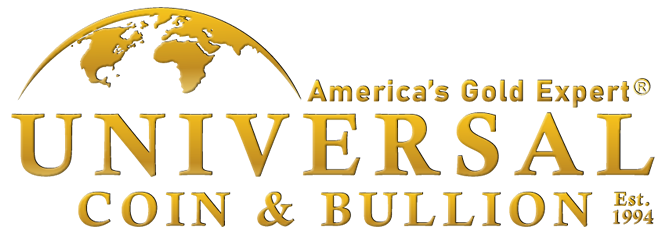
July 2025 – Week 1 Edition
Mid-Year Review of Metals and Other Markets
Stock investors have celebrated the fact that two major market indexes ended the first half of 2025 at record highs, but they didn’t report all the details behind that rise. True, the S&P 500 and NASDAQ composite each hit all-time highs but many other indicators with wide breadth did not make highs and most of the stocks within the S&P 500 and NASDAQ are suffering.
Here are five examples – three indices that rose slightly in 2025 and two others that fell:

First, the S&P 500 and NASDAQ are dominated by the “Magnificent 7” tech stocks that account for 34% of the S&P 500 weighting (performance) and 43% of the NASDAQ 100 weighting. Reviewing the other 493 S&P 500 stocks shows over half of them are down: 50% are below their 200-day moving averages. Unless you own an S&P 500 index fund, chances are good that your stocks are underwater.
It gets worse: In a broader survey of all 6,000 stocks trading on all U.S. exchanges, only 794 (13%) are currently in a clear and sustained uptrend, according to “followthemoney.com.” This is based on technical analysis indicators such as price momentum and volume. This means 5,200-plus stocks are either flat or down.
Another red flag is that the “Dow Theory” requires both the Dow Industrials and the Dow Transportation Index (DJT) to rise together to establish a bull market, based on the theory that goods must not only be produced but they must make their way to market. Currently, this divergence is mostly caused by a few “hot” tech and AI stocks lifting the indexes, while the real economy, goods movement, is slowing down.
Enough about stocks and our caution over Wall Street’s euphoria. Precious metals continue to eclipse stock gains (even though stock indexes are warped) by a ratio of at least five-to-one so far in 2025.

Platinum’s 52% gain in the first half, from $894 to $1,359 per ounce, is the biggest (pleasant) surprise. Among the other commodities, food is now more affordable, including a healthy breakfast of orange juice (-57%), eggs (-56%) and potatoes (-47%), all down significantly for the first half of the year.
The energy sector is also down, causing some relief at the gas pump, despite a brief (12-day) Iranian conflict that saw a short spike in crude oil prices. After the ceasefire on June 23rd, crude oil prices dropped $14 (-18%) in a day, from $78 to $64 per barrel. For the first half of 2025, crude oil prices are down 9.3%, natural gas is down 9.1% and coal is down 14.6%, partly as a result of President Trump’s resumption of exploration (“Drill, baby, drill”) of traditional fossil fuels to replace ex-President Joe Biden’s EV mandates.
In the second half of 2025, we could see further overseas wars erupting, plus partisan bickering over the tax relief and spending cuts at home and ongoing tariff negotiations – any one of which could send stocks down and gold up, delivering similarly strong gains for gold in the second half of 2025.
Speaking of the second half, if you go back one full year rather than six months, gold is the strongest of the metals markets. Gold may trail platinum and tie with silver in 2025 but not over the past 12 months:

Gold is still the king of the metals!
My Weekly Coin Pick Just Happens to be One of My Favorite Coins
This week, I am once again recommending an expertly selected, lustrous 1914-D $2 ½ Indian gold coin in gem uncirculated, MS64 condition to your portfolio. The $2 ½ Indian series has long been a favorite of mine. I have written two Numismatic Literary Guild (NLG) Award-winning books on this very popular series of historic coins. Over the years, these books have stimulated many coin enthusiasts to add this series of coins to their collections, further supporting the market.
The $2 ½ and $5 Indians, first issued in 1908, were minted with the first and only fully incuse design on a U.S. gold coin. It only takes 15 coins to complete a business strike $2 ½ Indian set. This completable factor adds to the set-building collector attraction.
One of my favorite Indian Quarter Eagles is the 1914 Denver-minted coin. In the entire 15-coin series, Denver only minted three dates of these gold coins: the relatively common 1925-D and the rare 1911-D and 1914-D.
The 1914-D has a relatively low mintage compared to most other coins in the series and a low survival rate, partly due to the U.S. Government’s recall of gold in 1933, known as Executive Order 6102, which led to the melting of many gold coins.
Another point to consider is that I prefer coins with a significant spread between grades. The MS64 1914-D $2 ½ costs about five times more in MS65, which is just one grade higher on the Sheldon Scale. This allows for price movement between the two grades and gives collectors an opportunity to make a potential profit should they decide to divest their collection. The 1914-D $2 ½ Indian gold coin in MS64 is also currently selling significantly lower than its previous high.
The 1914-D was an easy choice for me to include in our innovative 20/20 Program, where I analyze population, popularity, rarity and other factors to find the best value in rare coins on the market, and it has trended higher since that time.
For all those reasons and more, you will treasure this beauty when you get it in your hands, as many have before you. Contact one of our professional representatives today, as I was only able to acquire a limited number of these coins in MS64 condition.

July began with a bang for precious metals. After a stellar first half, the metals continued their bullish run on the first trading day of the second half of 2025. Gold is up $44 per ounce in the futures market (+1.3%) and silver is up $0.60 (+1.6%). Part of the reason is the sinking dollar, as the U.S. Dollar Index (DXY) hit a 3.5-year low of 96.38 overnight, down 12.4% from its peak reading of 110 on January 13.
All statements, opinions, pricing, and ideas herein are believed to be reliable, truthful and accurate to the best of the Publisher’s knowledge at this time. They are not guaranteed in any way by anybody and are subject to change over time. The Publisher disclaims and is not liable for any claims or losses which may be incurred by third parties while relying on information published herein. Individuals should not look at this publication as giving finance or investment advice or information for their individual suitability. All readers are advised to independently verify all representations made herein or by its representatives for your individual suitability before making your investment or collecting decisions. Arbitration: This company strives to handle customer complaint issues directly with the customer in an expeditious manner. In the event an amicable resolution cannot be reached, you agree to accept binding arbitration. Any dispute, controversy, claim or disagreement arising out of or relating to transactions between you and this company shall be resolved by binding arbitration pursuant to the Federal Arbitration Act and conducted in Beaumont, Jefferson County, Texas. It is understood that the parties waive any right to a jury trial. Judgment upon the award rendered by the Arbitrator may be entered in any court having jurisdiction thereof. Reproduction or quotation of this newsletter is prohibited without written permission of the Publisher.



